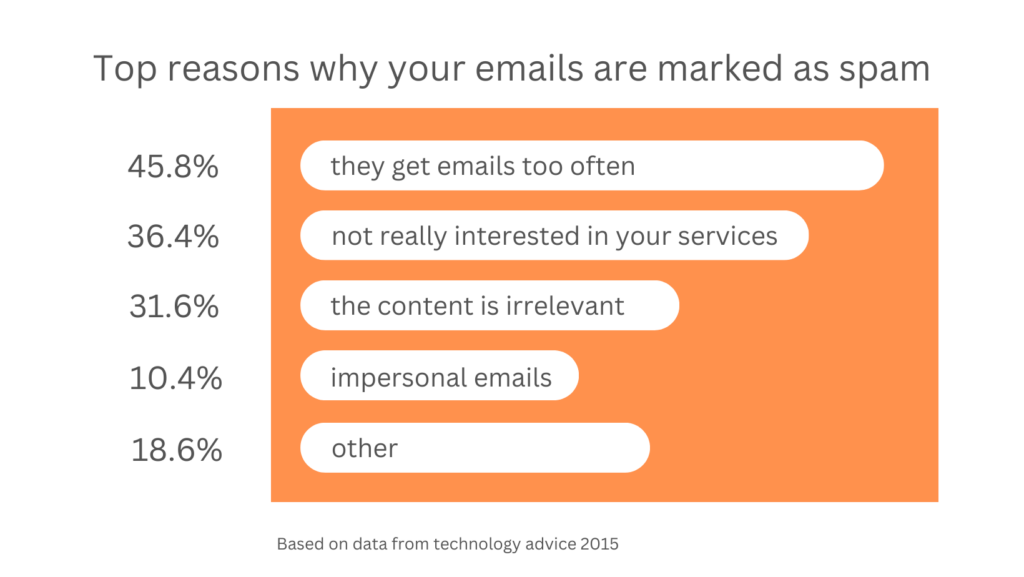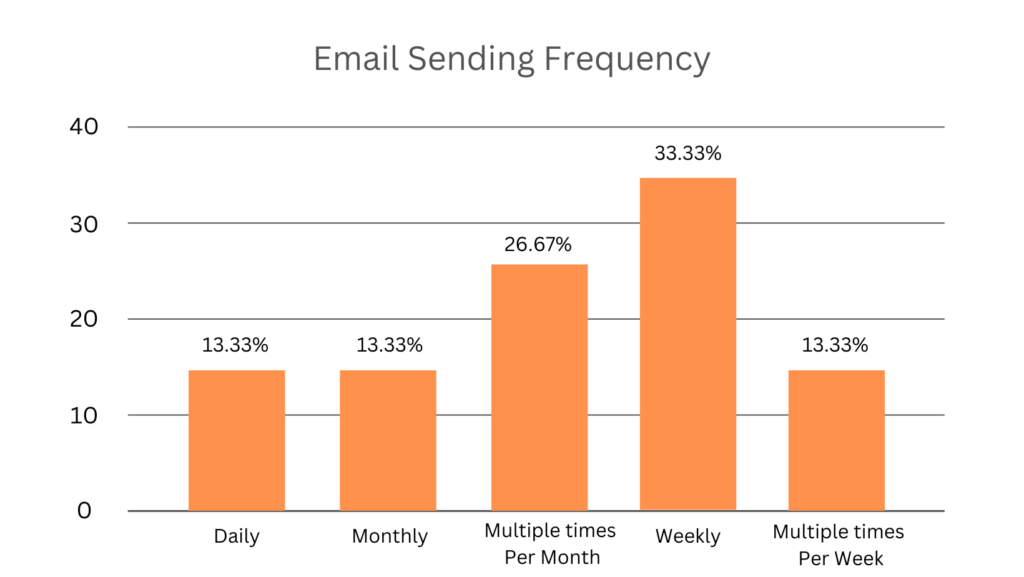Email marketing continues to stand out as a potent tool for connecting with your audience. However, there’s a fine line between staying top-of-mind and becoming an unwanted intrusion. The burning question for marketers is, “How many marketing emails is too many?”
Is there a magic number that keeps your subscribers engaged without overwhelming them?
In this blog post, we’re going to explore the optimal frequency for email marketing, discuss the factors that influence your email frequency, and let you make the call.
What Is the Optimal Frequency for Email Marketing?
The quest for the ideal email marketing frequency is a common one, especially when it comes to cold emails. But before we dive into the numbers, let’s take a moment to understand why this matters.

Email marketing, if executed strategically, boasts an astonishing ROI of 4200%. However, the key to achieving success lies in maintaining the delicate balance between engagement and annoyance.
Statistics from Fabrik reveal that the most effective email marketing campaigns typically send 1-2 emails per week. One data also suggests that sending emails once a week can yield an open rate of approximately 19.7%. This number drops to 18.4% when sending two emails per week. As we can see, less is often more when it comes to email marketing.
Here are some more statistics;

What Factors Affect the Frequency of Your Emails?
Let’s delve deeper into the factors that can affect the optimal frequency of your marketing emails:
1. Industry:
The industry you operate in plays a significant role in determining the ideal email marketing frequency. Different industries have distinct expectations and standards when it comes to email communication. Here are a few examples to illustrate this point:
Retail and E-commerce: These industries often send more frequent emails because customers expect to receive updates on sales, new products, and special offers regularly. Subscribers in this sector are generally more tolerant of frequent emails.
Professional Services: Businesses like law firms, accounting firms, or medical practices typically send emails less frequently. Their clients might not appreciate being bombarded with emails and may prefer receiving less frequent, more informative content.
Nonprofits: Nonprofit organizations often strike a balance, sending regular updates and newsletters but being mindful not to overwhelm their supporters.
It’s crucial to research your industry and competitors to understand the email marketing norms and adjust your strategy accordingly.
2. The Nature of Your Product/Service:
The type of product or service you offer also impacts email frequency. Consider the following:
Subscription-Based Services: If your business operates on a subscription model (e.g., streaming services or software as a service), customers may expect frequent updates and offers to make the most of their subscription. In such cases, more frequent emails might be effective.
High-Consideration Purchases: For products or services that require substantial thought and decision-making, like real estate or expensive electronics, customers typically prefer to receive fewer, but more valuable emails. High-quality content and personalized recommendations are key.
3. The Nature of Your Email:
The content and purpose of your email significantly impact how often you should send them. Consider these distinctions:
Newsletters: Newsletters are usually well-received when sent on a regular schedule. Subscribers often anticipate them and expect valuable, curated content. Depending on your audience’s expectations, this could be sent weekly, bi-weekly, or monthly.
Transactional Emails: Transactional emails, like order confirmations or shipping notifications, can be sent immediately as they are triggered by specific customer actions. Customers expect to receive these promptly, so there’s no need to limit their frequency.
Cold Emails and Promotions: Cold emails and promotional offers should be sent sparingly to avoid overwhelming recipients. These emails have a higher potential to be seen as spam if sent too frequently. A more personalized and less frequent approach can be more effective.
A cold email automation tool like Safemailer can help you here. It will help you improve your email deliverability, thus, avoiding spam filters.
4. Email Engagement:
Keep a close eye on how your audience engages with your emails. High engagement is a good sign, but declining open rates, click-through rates, and increasing unsubscribe rates can be warning signs of over-emailing.
Adjust your frequency based on these performance metrics. If you notice a decline in engagement, it may be time to reduce the number of emails you send.
Conversely, if engagement is high and subscribers are eagerly opening and clicking your emails, you might be able to send more without annoying your audience.
Conclusion:
So, how many marketing emails is too many? Well, there’s no one-size-fits-all solution. The optimal frequency for email marketing is a dynamic equation that depends on your unique business, audience, and goals.
So, let your audience decide. Listen to your recipients, analyze your data, and be willing to adapt.
Pay attention to engagement metrics, and adjust your email frequency regularly.
One valuable tool that can aid in minimizing your email marketing efforts is a cold email automation tool like SafeMailer. It can help you segment your email list, personalize your messages, and schedule emails at the optimal times.
You can also see valuable insights and analytics to help you make data-driven decisions about your email marketing strategy. By using this automation tool, finding the sweet spot between too many and too few emails will be much easier.

Leave a Reply